Oxymoronic, I know. Most are poorly-sized, horribly-designed, and usually with a superhero marketing tie-in. Kid’s bikes are usually made of pure Hernium and are dense enough to deform space-time in their immediate vicinity.
While I don’t remember my own kid’s bike well, beyond it being a gold Schwinn Stingray with matching banana seat, I recall being relieved it didn’t have the NutBuster gearshift on the top tube. It was heavy and poorly geared for life in a mountain town, and the coaster brake was ineffective at best.
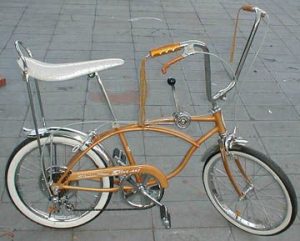
I saved my pennies, literally, and by the time I had around 15,000 of them, I convinced my parents to split the price of a “10-speed” with me. I had my eyes on a gold-colored Takara, with shifters on the stem and comfy plush foam grips.
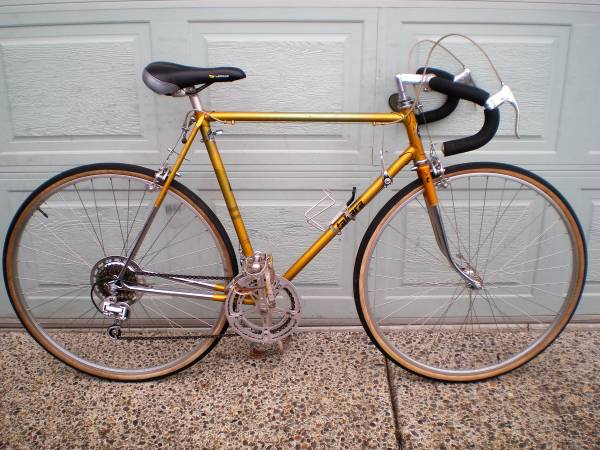
When road bikes were called “10-Speeds”.
I rode that Takara for 5 or 6 years, clear into junior high school, when some classmates decided to take it jumping and tacoed the wheels while I was in class. Shortly after that, I invented the mountain bike, by trying to move the non-damaged parts to a BMX bike and make a 10-speed BMX. Being about 12, I didn’t have the mechanical skills or a patent attorney, so I missed yet another fortune.
Fast forward a few decades, and I had neither a Takara nor a fortune, but I did have a small, squirming, pooping bundle of joy sitting on my lap. As my son was born in late March, I learned to feed him and pirate European streams of bike racing, often at the same time. He was raised on a steady diet of Sean Kelly’s commentary, and occasionally, food.
A good friend asked me to be his pit crew at a 12-hour race, later made famous when Lance came out of retirement to punish a bunch of weekend-warrior MAMILs. As we broke down the pit after my friend’s crushing defeat at the hands of Big Pharma, my then-16-month-old son saw a kid’s bike and latched his grimy little hands on it. My wife was able to separate him from the bike with the help of several other people and a prybar, whereupon he went into the only on-the-ground-kicking-and-screaming tantrum he’s ever had.
I looked at this and thought, “Yeah, I get it. I’ve done that about a bike. Pretty sure it was last Wednesday.”
Fortunately, the fine folks at Strider bikes had come along and established a business for tiny kick-bikes. These pedal-less bikes revolutionized kid’s cycling, and I wish we had had such a thing back in the ancient days of my own toddlerhood. The Strider and its clones (any trade-dress attorneys out there?) have all but removed training wheels to the dustbin of history, and they have opened up cycling to millions of happy children. I want one with 27.5+ wheels that I can take to the bar.
I placed the Strider in the living room, and waited as my son toddled around the corner. Upon seeing the Strider, he screamed at the top of his lungs, threw the toy in his hand over his shoulder, and hopped aboard. Within seconds, he was scooting around the room, scaring the bejeezus out of the cat and running over my feet.
That winter, I placed 2x6s on the floor and he rode skinnies, see-saws, and whatever other inch-and-a-half high obstacles we could make.
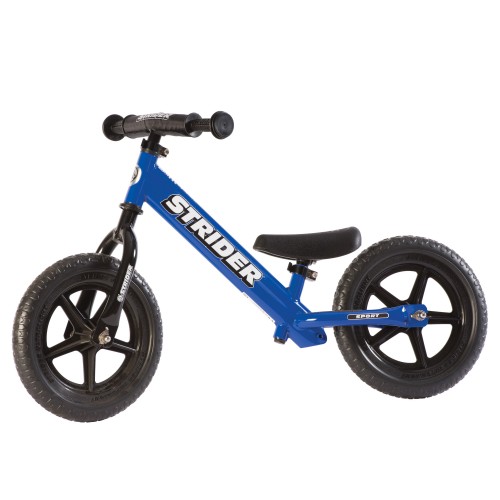
Happy, happy, joy, joy.
By the time he’s outgrown it, he’d worn the tires completely bald and the grips straight off the handlebars. Sadly, fitting him to that bike was the easiest fit for a decade.
His next bike had 10″ wheels and a nice BMX-style bar, but he insisted that the bars were wrong and that he wanted road bars. I found a tiny pair of road bars buried in the basement of the second-hands sports store, and put fresh tape on them. I took the pedals off, and he learned to ride it first like his Strider, than with the pedals restored. It was on this machine that he discovered the joy of riding fast down the bike path, as well as the valuable lesson of How to Ride Fast Off the Bike Path Into a Large Bush. He loved that bike, but outgrew it quickly.
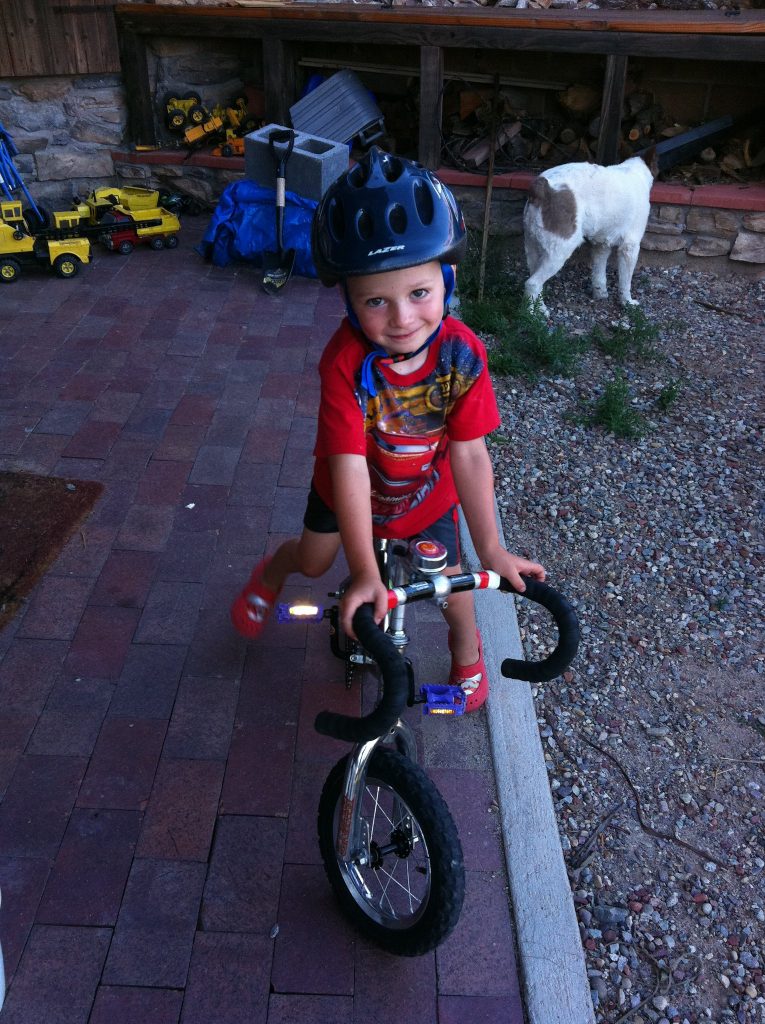
Like many kids, he went through a succession of single-speed coaster brake bikes, and finally moved to a decent Giant 24″ wheel mountain bike. These are pretty easy to find, are easy to repair (except none seem to have replaceable derailleur hangers, I guess because kids never crash).
During this period of his life, my son also got heavily into BMX racing, and our bike collection grew quickly. BMX bikes are wonders of simplicity, and there are untold thousands available second-hand at tracks and on Facebook groups. Don’t buy a new one, find a slightly used one for pennies on the dollar and use it while it fits the racer. Although he is racing BMX less these days, he still enjoys the local race series and practice nights at the track. If you have a BMX track nearby, there is no better place for a kid to learn handling skills and to make friends. As far as kid’s sports go, it’s also surprisingly inexpensive, particularly compared to hockey or skiing.
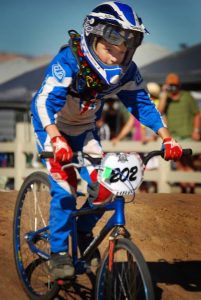
Similarly, used 24″ wheel mountain bikes are relatively easy to find, but most have nasty coil forks which offer up to 2mm of travel and weigh about 20 pounds. As 26″ wheels fade from mountain biking, medium and large sized frames are impossible to get rid of, but small and XS frames can still fetch top dollar as kid’s bikes. I refitted my son’s 24″ wheel Giant with an old Sid fork and laced up new disc wheel front wheel for him. This worked great with an Avid mechanical disc brake, and he rode the bike until it was too small.
At about 4′-8″, he was on the bubble between an older 26er and the XXS 27.5″ bikes. It was proving difficult to find a 26er, but all the bikes on the market had 54cm or longer top tubes in the small sizes. Only Canadian bikes, specifically Norco and Rocky Mountain, had a 52.5cm top tube in 2016. With a 40mm stem, I was able to fit the XXS Rocky Mountain Soul to him, and emulate the modern long-top-tube-short-stem fit. He should be able to ride this 27.5 hardtail until he’s a bit over 5′.
Finding a mountain bike for someone between 4′-6″ and 5′-0″ is remarkably difficult, but compared to finding a road bike, it’s a cakewalk. Road bikes with 47-49cm top tubes are really rare, and when they pop up at a second-hand store or eBay, they go quickly. Small athletes are at a disadvantage in cycling, as most bikes that fit are also much heavier than the athlete. Budget is also an issue, as the high-quality road bikes can cost upwards of $1,000.
There are some really nice bikes out there, like the IslaBikes Luath series, Kona Jake24 (possibly out of production but can be found), as well as Giant, Trek, Specialized, and so forth. Fuji, Scott, and other brands have made 24″ kid’s road bikes in the past, so they may appear online or locally. As the industry moves towards disc brakes, there is a bit of trickle to kid’s bikes, allowing different wheel sizes to be used. This is a good idea, but doesn’t address the fact that changing the wheel has no effect on toptube size.
As a gross generalization, at about 4′ tall, the young athlete should be able to ride a 24″ wheel and a 45cm top tube, and by about 5′, they can fit about a 49-50cm top tube with either 650c or 26″ wheels. 700c wheels at this size are a challenge, because the short top tube pulls the front wheel back into the toe-overlap zone. For some reason, the bike industry has decided that 165mm cranks are no longer needed, as all humans are now at least 5′-6″ and are fine with 170s. Even 165s are arguably too long for a small athlete, but unless you want to set up a 1x drivetrain and use BMX cranks, you’re probably stuck with cranks as long as the rider’s shin.
As boys approach 5′, their feet can be disproportionately large, exacerbating toe overlap. On my own 57cm road frame, I get a bit of overlap with size 10 feet and 172.5mm cranks, but it’s rarely noticeable. Younger cyclists, however, may not like the sensation and may not adjust their foot position to avoid the overlap.
For a couple of years, my son rode a Pinarello FP-0. It was about as Italian as lo mein, being an aluminum frame made in China, but he loved it. The bike had a nice Shimano Claris grouppo and Pinarello’s house-brand Most cockpit and saddle. He wore out the stock Kenda tires, so I replaced them with Panaracer Paselas, which will outlive anything, including cockroaches. The only quibble I had with the bike was its horizontal top tube. Sloping top tubes can make all the difference on a tiny bike for a tiny athlete. Also, the price. $1,000 for a 24″ bike is ridiculous, but I was lucky to get it at a great price from a shop I had designed. I think the majority of the pricetag was in the downtube silkscreen, because nothing else on the bike was remarkable, except its itty-bitty size. He was able to ride this bike for about 4 years- it was way too large initially (he was maybe 3′-10″), but lasted until he was a bit over 4′-6″, by then he looked hunched over it.

Spoke cards are mandatory.
Also, not all kid’s road bikes have ‘cross-style top brake levers, which are key for budding road cyclists. However, they are easy to install and inexpensive, so if you find a bike without them, you or your local shop can take care of that quickly.
After outgrowing the Pinarello, my son rode for a couple of thousand miles on the Diamondback Podium 650c. I think this bike offers a pretty incredible value for $400 MSRP and you can buy direct or through many online resellers, often for under $300. The build is decent, with a Shimano Claris 8-speed grouppo. To me, the most noticeable pluses are the sloping top tube, and mini-V brakes. The deeply sloping top tube is self-explanatory, allowing easy standover.
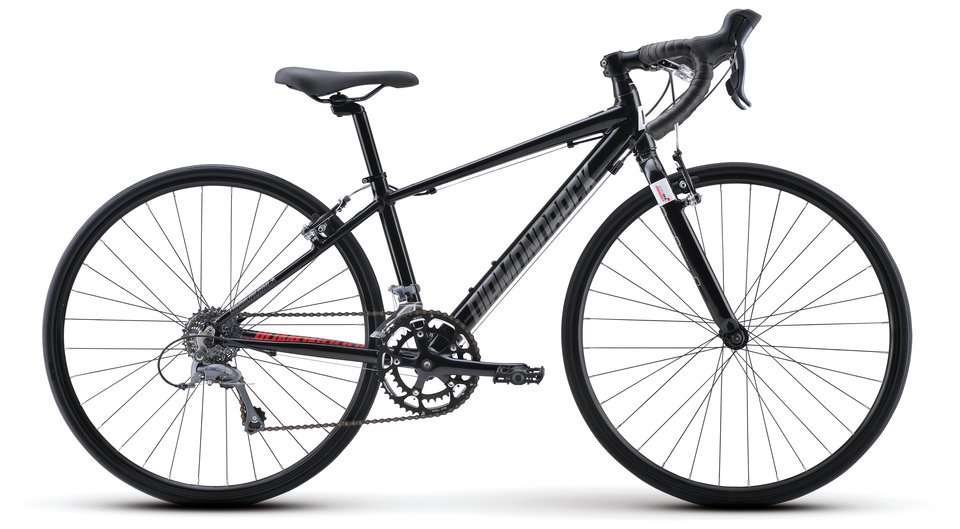
But those V-brakes…why? I puzzled over this for a while, before I realized that there was enough room in the pad adjustability to swap out the 650c wheels for 26″ MTB wheels. I was then able to put a larger volume tire on (just because we get the benefits doesn’t mean a kid can’t). Ritchey Tom Slicks fit nicely and provided a better ride than the 650c x 25s that came with the bike, and I was able to put Schwalbe 26×1-3/8″ cyclocross tires on for the local race series. By simply buying another cassette, I was able to have 2 sets of wheels and keep an antique, very nice set of 26ers rolling. Also, 650c wheels are decidedly less popular these days, so tire selection is poor and there are few options.
Other details on the bike are quite easy to upgrade as the kid grows. The bars are 1″, and the stock stem is a very long 70mm. However, 35mm BMX stems can be had for $10 or less, shortening the reach. As the kid grows, swapping stems is very easy. The bike also comes with a large spacer stack, so you can raise the bar pretty high, again shortening the reach. The 27.2mm seatpost is easy to change from a straight to a layback as the rider grows. It’s a remarkably versatile bike, easy to update for growing cyclists, and priced at a level that makes it reasonable.
The Podium 650c has an effective top tube of 49cm, and the next step up in the smallest 700c frames is typically 51-52cm. By the time the kid has outgrown that 49cm top tube, usually about 4′-10″ to 5′-0″, you can move into a small road frame and shorten the stem again. Diamondback’s Airen series of women’s bikes offers a disc-brake bike with a 50cm top tube, and neutral graphics which won’t be off-putting to a 12-year-old boy.

For the mechanically-minded parent, building a bike up is fun and a good way to try to teach Junior how to fix a bike. I’m certainly not afraid to do it, but I have a huge parts stash and lots of tools. I may have used upgrading my own bike as a way to get a grouppo for my son’s bike, but if my wife is reading this, no, I didn’t. In my estimation, SRAM road levers seem to be able to adjust closer to the bars than Shimano Claris levers, which is better for small hands. Also, both my wife and son think SRAM double-tap shifting is easier to learn and more intuitive than Shimano 2-lever shifting. I have not let them try my eTap shifting that I definitely did not put on my bike when I definitely did not move my 10-speed SRAM stuff to my kid’s bike. Nothing to see here, move along.